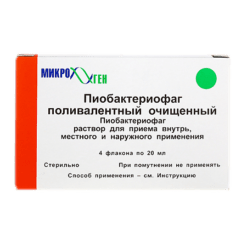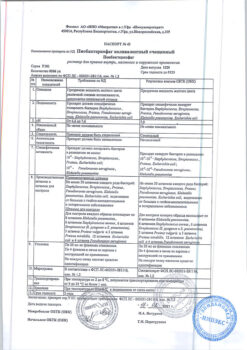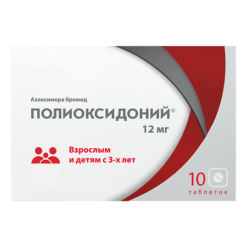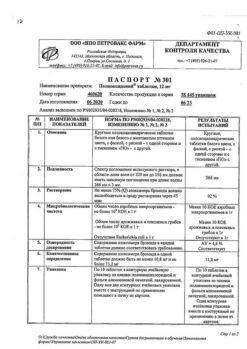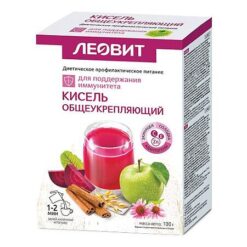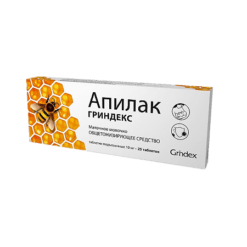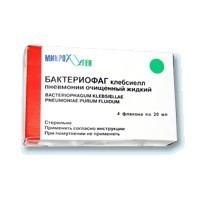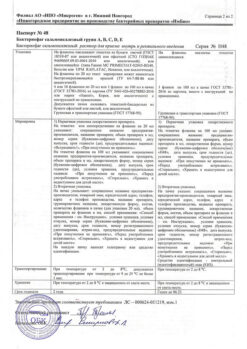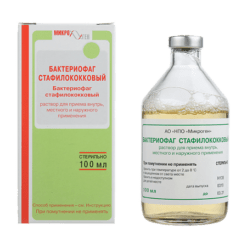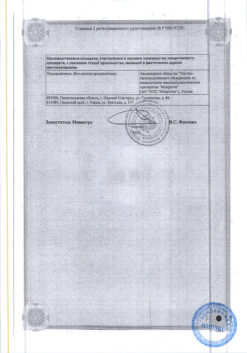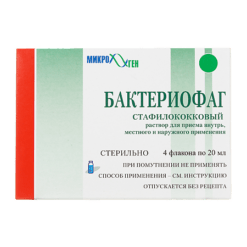No products in the cart.
Olumiant, 4 mg 28 pcs
€1.00
Out of stock
(E-mail when Stock is available)
Description Immunosuppressants, selective immunosuppressants
Pharmacodynamics:
Mechanism of Action
Baricitinib is a selective and reversible inhibitor of Janus kinase 1 and 2 (JAK1 and JAK2). Studies have shown that baricitinib inhibits the activity of JAK1, JAK2, tyrosine kinase-2 and JAK3 with IC50 (half-maximal inhibition concentration) values of 5.9, 5.7, 53 and > 400 nM, respectively.
Janus kinases (JAKs) are enzymes that transduce intracellular signals from cell receptors for a number of cytokines and growth factors involved in hematopoiesis, inflammation and immune response. As part of the intracellular signaling pathway, Janus kinases phosphorylate and activate STATs (signal transporters and activators of transcription), which in turn activate gene expression in the cell.
Baricitinib modulates these signaling reaction cascades by partially inhibiting the enzymatic activity of JAK1 and JAK2, thereby reducing STAT phosphorylation and activation.
Pharmacodynamic effects
Inhibition of interleukin-6-induced phosphorylation of STAT3
Administration of baricitinib to healthy volunteers resulted in a dose-dependent inhibition of interleukin-6-induced STAT3 phosphorylation, with maximum inhibition 2 hours after baricitinib administration and a return to baseline values after 24 hours.
Twelve weeks after initiation of Olumiant, mean serum IgG, IgM, and IgA values decreased and remained steadily reduced for at least 104 weeks. In most patients, changes in immunoglobulin values were within the range of normal values.
Lymphocytes
The mean absolute number of lymphocytes increased within 1 week of starting Olumiant, but returned to baseline values by week 24 and remained stable for at least 104 weeks thereafter. In most patients, changes in lymphocyte counts were within the range of normal values.
C-reactive protein
In patients with rheumatoid arthritis, a decrease in serum C-reactive protein (CRP) concentrations was observed as early as 1 week after starting Olumiant and remained reduced for the entire duration of the drug.
The use of baricitinib led to an average increase in serum creatinine concentration of 3.8 μmol/L after two weeks of treatment compared to placebo, and these values remained stable thereafter until 104 weeks of treatment. This may be due to the inhibition of creatinine secretion by baricitinib in the renal tubules. Consequently, evaluation of glomerular filtration rate based on serum creatinine concentration may be slightly reduced without an actual decrease in renal function or adverse renal reactions.
Vaccination
The effect of baricitinib on the humoral response after administration of non-living vaccines (inactivated pneumococcal vaccine or inactivated tetanus vaccine) has been studied in a clinical trial in patients with rheumatoid arthritis who received baricitinib at doses of 2 mg and 4 mg. Most of the patients in the study were taking baricitinib in combination with methotrexate. The results of the study showed that an adequate immune response (IgG) developed in 68% of patients after pneumococcal vaccine administration and in 43.1% of patients after tetanus vaccine administration.
Pharmacokinetics:
A dose-dependent increase in systemic drug exposure was observed following oral administration of baricitinib in the therapeutic dose range. The pharmacokinetics of baricitinib are linear in time.
Intake
After oral administration baricitinib is rapidly absorbed, time to reach maximum concentration (tmax) is approximately 1 h (range 0.5-3.0 h), absolute bioavailability is about 79%. Food intake resulted in a 14% decrease in baricitinib exposure, an 18% decrease in maximum concentration (Cmax) and a 0.5 hour increase in tmax. These changes are not clinically significant.
Distribution
The mean volume of distribution after intravenous injection was 76 L, indicating the distribution of baricitinib in the tissues. Approximately 50% of baricitinib is bound to plasma proteins.
Metabolism
Metabolism of baricitinib is mediated by CYP3A4 isoenzyme, with less than 10% of the dose undergoing biotransformation. Baricitinib metabolites were not detected in blood plasma. Elevation
Kidney excretion via glomerular filtration and active secretion via OAT3, Pgp, BCRP and MATE2-K is the primary mechanism of clearance of baricitinib. A pharmacological study found that approximately 75% of the administered dose was excreted by the kidneys, while only about 20% was excreted through the intestine.
In patients with rheumatoid arthritis, mean clearance and half-life averaged 9.42 L/hour and 12.5 hours, respectively.
The Cmax and AUC (area under the concentration-time curve) of baricitinib at steady state pharmacokinetics in patients with rheumatoid arthritis were 1.4 and 2.0 times higher, respectively, than in healthy volunteers.
Renal impairment
Renal function has been shown to significantly affect baricitinib exposure. The average ratio of AUC in patients with mild to moderate renal impairment to AUC in patients with normal renal function is 1.41 and 2.22, respectively.
The mean ratio of Cmax in patients with mild to moderate renal impairment to Stakh in patients with normal renal function is 1.16 and 1.46, respectively.
Hepatic impairment
In patients with mild to moderate hepatic impairment, no clinically significant changes in the pharmacokinetics of baricitinib have been observed. The use of baricitinib in patients with severe hepatic impairment has not been studied.
Patients of advanced age
Age 65 years or older or 75 years or older has no effect on baricitinib exposure (Cmax and AUC).
Children
There are currently no data on the safety, efficacy and pharmacokinetics of the drug in children.
Weight, sex, race and ethnicity have no clinically significant effect on the pharmacokinetics of baricitinib.
.
Indications
Indications
Treatment of moderate to severe active rheumatoid arthritis in adult patients intolerant of or lacking an adequate response to treatment with one or more disease-modifying antirheumatic drugs.
Olumiant can be used as monotherapy or in combination therapy with methotrexate.
Pharmacological effect
Pharmacological effect
Immunosuppressants, selective immunosuppressants
Pharmacodynamics:
Mechanism of action
Baricitinib is a selective and reversible inhibitor of Janus kinase 1 and 2 (JAK1 and JAK2). Studies have shown that baricitinib inhibits the activity of JAK1, JAK2, tyrosine kinase-2 and JAK3 with IC50 values of 5.9, 5.7, 53 and >400 nM, respectively.
Janus kinases (JAKs) are enzymes that transduce intracellular signals from cellular receptors for a number of cytokines and growth factors involved in hematopoiesis, inflammation and the immune response. As part of the intracellular signaling pathway, Janus kinases phosphorylate and activate STATs (signal transporters and activators of transcription), which in turn activate gene expression in the cell.
Baricitinib modulates these signaling cascades by partially inhibiting the enzymatic activity of JAK1 and JAK2, thereby reducing STAT phosphorylation and activation.
Pharmacodynamic effects
Inhibition of interleukin-6-induced STAT3 phosphorylation
Administration of baricitinib to healthy volunteers resulted in a dose-dependent inhibition of interleukin-6-induced STAT3 phosphorylation, with maximal inhibition at 2 hours after baricitinib administration and a return to baseline levels at 24 hours.
Immunoglobulins
After 12 weeks of starting Olumiant, mean serum IgG, IgM, and IgA values decreased and remained consistently decreased for at least 104 weeks. In most patients, changes in immunoglobulin values were within the normal range.
Lymphocytes
Within 1 week after starting Olumiant, the mean absolute lymphocyte count increased, but returned to baseline values by week 24 and subsequently remained stable for at least 104 weeks. In most patients, lymphocyte count changes were within the normal range.
C-reactive protein
In patients with rheumatoid arthritis, a decrease in the concentration of serum C-reactive protein (CRP) was observed within 1 week after starting use of the drug Olumiant and remained reduced throughout the entire period of taking the drug.
Creatinine
Baricitinib resulted in an average increase in serum creatinine concentrations of 3.8 μmol/L after two weeks of treatment compared with placebo, which remained stable until week 104 of treatment. This may be due to inhibition of creatinine secretion by baricitinib in the renal tubules. Therefore, the estimate of glomerular filtration rate based on serum creatinine concentrations may be slightly reduced without actually reducing renal function or causing adverse renal reactions.
Vaccination
The effect of baricitinib on the antibody response following administration of non-live vaccines (inactivated pneumococcal vaccine or inactivated tetanus vaccine) was studied in a clinical study in patients with rheumatoid arthritis receiving baricitinib at doses of 2 mg and 4 mg. Most patients in the study took baricitinib in combination with methotrexate. The study results showed that an adequate immune response (IgG) developed in 68% of patients after administration of the pneumococcal vaccine and in 43.1% of patients after administration of the tetanus vaccine.
Pharmacokinetics:
Following oral administration of baricitinib over a range of therapeutic doses, a dose-dependent increase in systemic drug exposure was observed. The pharmacokinetics of baricitinib is linear over time.
Suction
After oral administration, baricitinib is rapidly absorbed, the time to maximum concentration (tmax) is approximately 1 hour (range 0.5-3.0 hours), and absolute bioavailability is approximately 79%. Food intake resulted in a 14% decrease in baricitinib exposure, a 18% decrease in maximum concentration (Cmax), and an increase in tmax by 0.5 hours. These changes are not clinically significant.
Distribution
The mean volume of distribution after intravenous administration was 76 L, indicating tissue distribution of baricitinib. Approximately 50% of baricitinib is bound to plasma proteins.
Metabolism
The metabolism of baricitinib is mediated by the CYP3A4 isoenzyme, with less than 10% of the dose undergoing biotransformation. Baricitinib metabolites were not detected in plasma.
Pharmacological studies have shown that baricitinib is eliminated predominantly unchanged by the kidneys (69%) and intestines (15%). 3 metabolites were excreted by the kidneys, 1 metabolite was excreted through the intestines, their amount was approximately 5% and 1% of the administered dose of the drug, respectively.
In vitro, baricitinib is a substrate for CYP3A4, organic anion transporter (OAT) 3, P-glycoprotein (Pgp), breast cancer resistance protein (BCRP), and multiple resistance and toxin clearance proteins 2-K (MATE 2-K). Baricitinib may be an inhibitor of organic cation transporter (OCT) 1. Baricitinib is not an inhibitor of OAT1, OAT2, OAT3, OCT2, OATP1B1, OATP1B3, BCRP, MATE1 and MATE2-K.
Removal
Renal excretion via glomerular filtration and active secretion via OAT3, Pgp, BCRP and MATE2-K is the main mechanism of baricitinib clearance. A pharmacological study revealed that approximately 75% of the administered dose was excreted by the kidneys, while only about 20% was excreted through the intestines.
In patients with rheumatoid arthritis, mean clearance and half-life averaged 9.42 L/hour and 12.5 hours, respectively.
The Cmax and AUC (area under the concentration-time curve) of baricitinib at steady state pharmacokinetics in patients with rheumatoid arthritis were 1.4 and 2.0 times higher, respectively, than in healthy volunteers.
Kidney failure
Renal function has been shown to significantly influence baricitinib exposure. The mean ratio of AUC in patients with mild to moderate renal impairment to AUC in patients with normal renal function was 1.41 and 2.22, respectively.
The average ratio of Cmax in patients with mild and moderate renal failure to Cmax in patients with normal renal function is 1.16 and 1.46, respectively.
Liver failure
In patients with mild or moderate hepatic impairment, no clinically significant changes in the pharmacokinetics of baricitinib were observed. Baricitinib has not been studied in patients with severe hepatic impairment.
Elderly patients
Age 65 years or older or 75 years or older does not affect baricitinib exposure (Cmax and AUC).
Children
Currently, there are no data on the safety, efficacy and pharmacokinetics of the drug in children.
Weight, gender, race and ethnicity do not have a clinically significant effect on the pharmacokinetics of baricitinib.
Special instructions
Special instructions
Infections
The incidence of infections, particularly upper respiratory tract infections, is higher with baricitinib than with placebo. In treatment-naïve patients, the combination with methotrexate was associated with an increased incidence of infections compared with baricitinib monotherapy. In patients with active, chronic or recurrent infections, it is recommended to carefully evaluate the benefit/risk ratio of using Olumiant before initiating therapy.
If infection occurs, the patient’s condition should be closely monitored, and. If the patient does not respond to standard therapy, it is recommended to temporarily discontinue use of Olumiant. Use of Olumiant should not be resumed until the infection resolves.
Tuberculosis
Before starting Olumiant, patients should be screened for tuberculosis. Olumiant is not recommended for use in patients with active tuberculosis. In patients with latent tuberculosis who have not previously received treatment, the possibility of anti-tuberculosis therapy should be considered before starting therapy with Olumiant.
Deviations from normal laboratory parameters
According to clinical studies, less than 1% of patients had the following changes in blood parameters: absolute neutrophil count less than 1 x 109 /L, absolute lymphocyte count less than 0.5 x 109 /L and hemoglobin less than 8 g/dL. It is not recommended to start therapy or temporarily stop using the drug if the neutrophil count decreases to less than 1 x 109 /L, the lymphocyte count decreases to less than 0.5 x 109 /L, or the hemoglobin decreases to less than 8 g/dL.
Elderly patients with rheumatoid arthritis have an increased risk of developing lymphocytosis. There is evidence of rare cases of the development of lymphoproliferative diseases.
Reactivation of viral infection
Cases of viral reactivation have been reported in clinical studies, including cases of herpes virus reactivation (eg, herpes zoster, herpes simplex).
Cases of herpes zoster were more often observed in patients aged 65 years and older who had previously received treatment with biological and traditional disease-modifying antirheumatic drugs. If a patient develops herpes zoster, use of Olumiant should be temporarily discontinued until the disease resolves.
In accordance with clinical guidelines, patients should be screened for viral hepatitis before initiating therapy with Olumiant. Patients with evidence of active hepatitis B or C viral hepatitis were not included in clinical studies. Patients who had detected antibodies to the hepatitis C virus, but no detected RNA of the hepatitis C virus, were allowed to participate in clinical trials. Patients with antibodies to the surface and core antigens of the hepatitis B virus, but without surface antigens of the hepatitis B virus, were also allowed to participate; in such patients, hepatitis B virus DNA expression should be monitored. If hepatitis B virus DNA is detected, the patient should be referred to a hepatologist to determine the possibility of continuing or discontinuing therapy.
Vaccination
There are no data on the response to vaccination with live vaccines in patients receiving baricitinib. The use of live attenuated vaccines is not recommended during or immediately before use of Olumiant. It is recommended that immunization be carried out in accordance with current recommendations before starting treatment with Olumiant.
Lipids
Patients receiving baricitinib experienced a dose-dependent increase in blood lipid concentrations compared to patients receiving placebo. In response to statin use, LDL concentrations decreased to levels recorded before the start of therapy. The lipid profile should be assessed approximately 12 weeks after initiation of Olumiant, after which patients should be treated in accordance with international clinical guidelines for the management of patients with hyperlipidemia. The effect of increased lipid concentrations on the incidence of cardiovascular disease and mortality was not established.
Increased concentration of liver transaminases
In clinical studies, increases in ALT and AST concentrations of 5 times or more and 10 times or more compared to ULN were recorded in less than 1% of patients. When using combination therapy with methotrexate in patients who had not previously received treatment, there was an increase in the incidence of elevated liver transaminases compared with baricitinib monotherapy. If elevated ALT or AST concentrations are detected during patient evaluation and drug-induced liver injury is suspected, use of Olumiant should be temporarily discontinued until this diagnosis has been excluded.
Malignant neoplasms
Patients with rheumatoid arthritis have an increased risk of malignancy, including the risk of lymphoma. The use of immunomodulatory drugs may increase the risk of malignancy, including the risk of lymphoma.
There are insufficient clinical data to assess the incidence of possible malignancy after the use of baricitinib. Long-term safety evaluation studies are ongoing.
Thromboembolism
Cases of deep vein thrombosis (DVT) and pulmonary embolism (PE) have been reported in patients receiving baricitinib. Caution should be exercised when using Olumiant in patients with risk factors for DVT/PE, such as advanced age, obesity, a history of DVT/PE, or in patients who have undergone surgery and immobilization. If clinical signs of DVT/PE are detected, the use of Olumiant should be temporarily discontinued, the patient’s condition should be immediately assessed and appropriate treatment should be administered.
Laboratory monitoring
Table 1. Laboratory values and monitoring guidelines
Laboratory indicators
Action
Monitoring Guide
Lipid profile parameters
Patients should be treated in accordance with international clinical guidelines for the management of patients with hyperlipidemia.
12 weeks after the start of treatment, and then in accordance with international clinical guidelines for the management of patients with hyperlipidemia.
Absolute number of neutrophils
If the neutrophil count is less than 1 x 109 cells/l, the drug should be discontinued; if the number of neutrophils is higher than this value, treatment can be resumed.
Before starting treatment and further according to routine patient management.
Absolute lymphocyte count
If the lymphocyte count is less than 0.5 x 109 cells/l, the drug should be discontinued; if the number of lymphocytes is higher than this value, treatment can be resumed.
Hemoglobin
If hemoglobin is less than 8 g/dL, the drug should be discontinued; Once the hemoglobin is above this value, treatment can be resumed.
Liver transaminases
If drug-induced liver damage is suspected, treatment should be temporarily discontinued.
Immunosuppressants
The use of baricitinib in combination with biologic antirheumatic drugs or other Janus kinase (JAK) inhibitors is not recommended as the risk of additive immunosuppression cannot be excluded.
There are insufficient data on the use of baricitinib in combination with potent immunosuppressants (eg, azathioprine, tacrolimus, cyclosporine), and caution should be exercised when using such combinations.
Impact on the ability to drive vehicles. Wed and fur.:
The drug Olumiant does not have or has an insignificant effect on the ability to drive vehicles and operate machinery.
Active ingredient
Active ingredient
Baricitinib
Composition
Composition
1 tablet contains:
Core
active ingredient – baricitinib 4,000 mg;
Excipients – intragranular: mannitol, microcrystalline cellulose, croscarmellose sodium, magnesium stearate; extragranular – microcrystalline cellulose, croscarmellose sodium, magnesium stearate.
Shell (film): pink dye mixture (85G140009) [polyvinyl alcohol, titanium dioxide, macrogol, talc, lecithin (soy), iron oxide red].
Pregnancy
Pregnancy
Pregnancy
It has been established that the JAK/STAT reaction cascade is associated with cell adhesion and polarization, which may affect the process of early embryogenesis. There are no data on the use of baricitinib in pregnant women. Reproductive toxicity has been demonstrated in animal studies. Baricitinib was teratogenic in rats and rabbits.
Based on animal studies, high doses of baricitinib may have adverse effects on intrauterine skeletal development.
The use of Olumiant during pregnancy is contraindicated.
Women of childbearing potential should use effective contraception during and for at least 1 week after treatment. If the patient becomes pregnant while using Olumiant, she must be informed of the possible risk to the fetus.
Breast-feeding
It is unknown whether baricitinib (or its metabolites) is excreted in breast milk.
Data from pharmacodynamic/toxicological studies in animals have shown that baricitinib is excreted in breast milk.
The risk to newborns/infants cannot be excluded and Olumiant should therefore not be used during breastfeeding. It is necessary to evaluate the benefits of breastfeeding for the child and the use of the drug Olumiant for the woman and decide whether to stop breastfeeding or use the drug Olumiant.
Fertility
Results from animal studies suggest that baricitinib may reduce female fertility during treatment. No effect of baricitinib on spermatogenesis was observed.
Contraindications
Contraindications
– Hypersensitivity to the active substance or to any excipient of the drug
– Pregnancy
– Breastfeeding period
– Children under 18 years of age (due to lack of data on effectiveness and safety)
With caution:
– Renal failure with CC less than 30 ml/min
– Severe liver failure
– Age over 75 years
– Active, chronic or recurrent infections (including tuberculosis)
– Decrease in the number of neutrophils (less than 1×109/l), decrease in the number of lymphocytes (less than 0.5×109/l), decrease in hemoglobin (less than 8 g/dl)
– Active form of viral hepatitis B and C
– Simultaneous use of live vaccines
– Patients with risk factors for DVT/PE
– Combination with biological disease-modifying antirheumatic drugs or other Janus kinase inhibitors
– Combination with powerful immunosuppressants (eg, azathioprine, tacrolimus, cyclosporine).
Side Effects
Side Effects
The most common adverse reactions that occurred in ≥ 2% of patients taking Olumiant as monotherapy or in combination with disease-modifying antirheumatic drugs were increased LDL cholesterol (33.6%), upper respiratory tract infections (14.7%), and nausea (2.8%). Infections reported with Olumiant include herpes zoster.
The table below presents adverse reactions with frequency: very often (≥1/10), often (from ≥1/100 to <1/10), infrequently (from ≥1/1000 to <1/100).
System-organ class
Very often
Often
Uncommon
Infections and infestations
Upper respiratory tract infectiona
Shingles,
Herpes simplexb,
Gastroenteritis,
Urinary tract infection
Pneumonia
Blood and lymphatic system disorders
Thrombocytosis >600 x 109 cells/hp
Neutropenia < 1x109 cells/hp
Metabolic and nutritional disorders
Hypercholesterolemias
Hypertriglyceridemias
Gastrointestinal disorders
Nausea
Disorders of the liver and biliary tract
Increased ALT concentration ≥ 3xULNs
Increased AST concentration ≥ 3xVGNs
Skin and subcutaneous tissue disorders
Acne
Changes in laboratory results
Increased body weight, increased concentration of creatine phosphokinase >5 x ULNs
a General term (acute sinusitis, epiglottitis, laryngitis, nasopharyngitis, pain in the oropharynx, pharyngitis, pharyngotonsillitis, rhinitis, sinusitis, tonsillitis, tracheitis, upper respiratory tract infections).
b General term (eczema herpeticum, herpes simplex, ophthalmic herpes, oral herpes).
c Includes changes detected during laboratory testing.
Description of some adverse reactions
Nausea
In treatment-naïve patients, at 52 weeks, the incidence of nausea was higher with combination therapy of methotrexate and Olumiant (9.3%) compared with methotrexate alone (6.2%) or Olumiant (4.4%). Most often, nausea was observed during the first 2 weeks of treatment.
Infections
In controlled clinical studies over 16 weeks, the incidence of all infections (the number of patients with 1 or more events per 100 patient-years) was 101 in the Olumiant group compared with 83 in the placebo group. Most infections were mild or moderate in severity.
In studies of up to 16 weeks that examined both doses of the drug, infections were observed with the 4 mg dose in 31.9% of patients, with the 2 mg dose in 28.8% of patients, and with placebo in 24.1% of patients. Adverse reactions when using the drug Olumiant and placebo were recorded with the following frequency: upper respiratory tract infections 14.7% – when using the drug Olumiant, 11.7% – when using placebo; urinary tract infections 3.4% – when using the drug Olumiant, 2.7% – when using placebo; gastroenteritis 1.6% – when using the drug Olumiant, 0.8% – when using placebo; herpes simplex 1.8% – when using the drug Olumiant, 0.7% – when using placebo; herpes zoster 1.4% – when using the drug Olumiant, 0.4% – when using placebo.
In treatment-naïve patients during the 52-week clinical study, the incidence of upper respiratory tract infections was higher with combination therapy of methotrexate and Olumiant (26.0%) compared with methotrexate alone (22.9%) or Olumiant (22.0%).
The incidence of serious infections with Olumiant (1.1%) was similar to that with placebo (1.2%). In the group of patients receiving Olumiant, the most common serious infections were herpes zoster and inflammation of the subcutaneous tissue. With long-term use of the drug, the incidence of serious infections did not change. The overall incidence of serious infections was 3.2 per 100 patient-years.
Increased concentration of liver transaminases
In controlled studies over 16 weeks, alanine aminotransferase (ALT) and aspartate aminotransferase (AST) concentrations of 3 times or more the upper limit of normal (ULN) were observed in 1.4% and 0.8% of patients receiving Olumiant, compared with 1.0% and 0.8% of patients receiving placebo, respectively. Most cases of increased liver transaminase concentrations were asymptomatic and short-lived.
In previously untreated patients, the use of combination therapy with Olumiant with potentially hepatotoxic drugs such as methotrexate resulted in an increased incidence of elevated liver transaminases. Over 52 weeks, increases in ALT and AST concentrations (≥ 3 x ULN) were more common with combination therapy with methotrexate and Olumiant (7.5% and 3.8%) than with methotrexate monotherapy (2.9% and 0.5%) or Olumiant monotherapy (1.9% and 1.3%).
The nature and frequency of increases in ALT/AST concentrations did not change, including during additional long-term studies.
Increased lipid concentration
Baricitinib therapy was found to cause dose-dependent increases in lipid concentrations, including total cholesterol, triglycerides, LDL, and HDL. No changes in the LDL/HDL ratio were observed. An increase in lipid concentrations was observed at 12 weeks after the start of therapy and persisted subsequently, including during long-term studies. In controlled clinical studies over 16 weeks, the following changes were observed with Olumiant and placebo:
An increase in the concentration of total cholesterol to 5.17 mmol/l or more: in 49.1% of patients – when using the drug Olumiant, in 15.8% of patients – when using placebo.
An increase in LDL concentration to 3.36 mmol/l or more: in 33.6% of patients – when using the drug Olumiant, in 10.3% of patients – when using placebo.
An increase in HDL concentration to 1.55 mmol/l or more: in 42.7% of patients – when using the drug Olumiant, in 13.8% of patients – when using placebo.
Increase in triglyceride concentration to 5.65 mmol/l or more: in 0.4% of patients – when using the drug Olumiant, in 0.5% of patients – when using placebo.
During clinical studies using both doses of the drug, a dose-dependent increase in the concentration of total cholesterol to 5.17 mmol/l or more was observed: in 48.8% of patients when using a dose of 4 mg, in 34.7% of patients when using a dose of 2 mg and in 17.8% of patients when using placebo.
Elevated LDL concentrations decreased to baseline values (fixed before the start of the clinical trial) in response to statin use.
Creatine phosphokinase (CPK)
During 16-week controlled clinical studies, increases in CPK concentrations were common. A significant increase (more than 5 times the ULN) was observed in 0.8% of patients receiving Olumiant and in 0.3% of patients receiving placebo. The increase in CPK concentration was dose-dependent. The indicator increased 5 or more times (≥ 5 x ULN) compared to the upper limit of normal in 1.5% of patients when using Olumiant at a dose of 4 mg, in 0.8% of patients when using Olumiant at a dose of 2 mg, and in 0.6% of patients when using placebo. Most cases were temporary and did not require discontinuation of treatment. No confirmed cases of rhabdomyolysis were reported during clinical studies. An increase in the concentration of creatine phosphokinase was observed at 4 weeks after the start of therapy and persisted subsequently, including during additional long-term studies.
Neutropenia
During 16-week controlled clinical studies, 0.3% of patients receiving Olumiant (compared to 0% of patients receiving placebo) experienced a decrease in neutrophil counts below 1 x 109 cells/L.
There was no clear association between decreased neutrophil counts and the occurrence of serious infections. However, if the absolute neutrophil count decreased to less than 1 x 109 cells/L during the clinical study, treatment was stopped. The nature and frequency of the decrease in the number of neutrophils did not change, including during long-term studies.
Thrombocytosis
During 16-week controlled clinical studies, 2.0% of patients receiving Olumiant 4 mg and 1.1% of patients receiving placebo experienced an increase in platelet count above 600 x 109 cells/L. There was no relationship between an increase in platelet count and thrombotic adverse reactions. The nature and frequency of increases in platelet counts did not change, including during long-term studies.
All adverse reactions recorded in the post-marketing period must be reported. This will allow you to continuously monitor the benefit-risk ratio of the drug. Physicians should report all reported adverse reactions.
Interaction
Interaction
Pharmacodynamic interactions
Immunosuppressants
Interactions with biologic disease-modifying antirheumatic drugs or other Janus kinase (JAK) inhibitors have not been studied. Clinical studies have limited the use of baricitinib in combination with potent immunosuppressants such as azathioprine, tacrolimus, or cyclosporine, and the risk of additive immunosuppression cannot be excluded.
Effect of other drugs on the pharmacokinetics of baricitinib:
Conveyors
In vitro, baricitinib is a substrate for organic anion transporter (OAT) 3, P-glycoprotein (Pgp), breast cancer resistance protein (BCRP), and multiple resistance and toxin clearance (MATE) 2-K proteins.
In a pharmacological study, probenecid (a potent OAT3 inhibitor) resulted in an approximately two-fold increase in AUC(0-∞) without changing baricitinib tmax or Cmax. Therefore, in patients taking potent OAT3 inhibitors such as probenecid, the recommended dose of baricitinib is 2 mg once daily.
Pharmacological studies have not been conducted using OAT3 inhibitors with less inhibitory activity. The prodrug leflunomide is rapidly converted to the active form teriflunomide, which is a weak OAT3 inhibitor and therefore may result in increased baricitinib exposure. Since this interaction has not been studied, caution should be exercised when leflunomide or teriflunomide is coadministered with baricitinib.
Concomitant use of the OATZ inhibitors ibuprofen and diclofenac with baricitinib may result in increased baricitinib exposure. However, the inhibitory activity of ibuprofen and diclofenac against OATZ is not as pronounced as that of probenecid, and therefore a clinically significant interaction is not expected.
Combination use of baricitinib with cyclosporine (a Pgp/BCRP inhibitor) or methotrexate (a substrate for several transporters including OATP1B1, OAT1, OAT3, BCRP, MRP2, MRP3 and MRP4 (multidrug resistance-associated proteins)) did not have a clinically significant effect on baricitinib exposure.
Cytochrome P450 isoenzymes
In vitro, baricitinib is a CYP3A4 substrate, although less than 10% of the total dose is metabolized by oxidation. In pharmacological studies, the combined use of baricitinib with ketoconazole (a strong CYP3A inhibitor) did not have a clinically significant effect on the pharmacokinetics of baricitinib.
Combination use of baricitinib with fluconazole (a moderate CYP3A/CYP2C19/CYP2C9 inhibitor) or rifampicin (a strong CYP3A inducer) did not result in clinically significant changes in baricitinib exposure.
Drugs that affect gastric pH
Increasing gastric pH with omeprazole did not have a clinically significant effect on baricitinib exposure.
Effect of baricitinib on the pharmacokinetics of other drugs:
Conveyors
In vitro, baricitinib is not an inhibitor of OAT1, OAT2, OAT3, organic cation transporter (OCT) 2, OATP1B1, OATP1B3, BCRP, MATE1 and MATE2-K. Baricitinib may be an OCT1 inhibitor, but there are currently no known selective OCT1 substrates for which clinically significant interactions can be predicted. Pharmacological studies revealed no clinically significant interactions between baricitinib and digoxin (a Pgp substrate) or methotrexate (a multiple transporter substrate).
Cytochrome P450 isoenzymes
In pharmacological studies, the combined use of baricitinib with CYP3A substrates (simvastatin, ethinyl estradiol or levonorgestrel) did not cause clinically significant changes in the pharmacokinetics of these drugs.
Overdose
Overdose
In clinical studies, single doses of up to 40 mg and repeated doses of up to 20 mg per day for 10 days did not produce toxic effects. The observed adverse reactions were comparable to those reported with lower doses of the drug, and no specific toxicity was identified.
Data from a pharmacokinetic study of a single 40 mg dose in healthy volunteers indicate that more than 90% of the administered dose is eliminated from the body within 24 hours. In case of overdose, it is recommended to monitor the patient for signs and symptoms of adverse reactions. In case of adverse reactions, appropriate treatment must be carried out.
Storage conditions
Storage conditions
At temperatures below 30 °C.
Keep out of the reach of children.
Shelf life
Shelf life
24 months.
Do not use after expiration date.
Manufacturer
Manufacturer
Lilly del Caribe Inc., Puerto Rico
Additional information
| Shelf life | 24 months. Do not use after the expiration date. |
|---|---|
| Conditions of storage | At a temperature below 30 ° C. Store out of the reach of children. |
| Manufacturer | Lilly S.A., Spain |
| Medication form | pills |
| Brand | Lilly S.A. |
Related products
Buy Olumiant, 4 mg 28 pcs with delivery to USA, UK, Europe and over 120 other countries.


